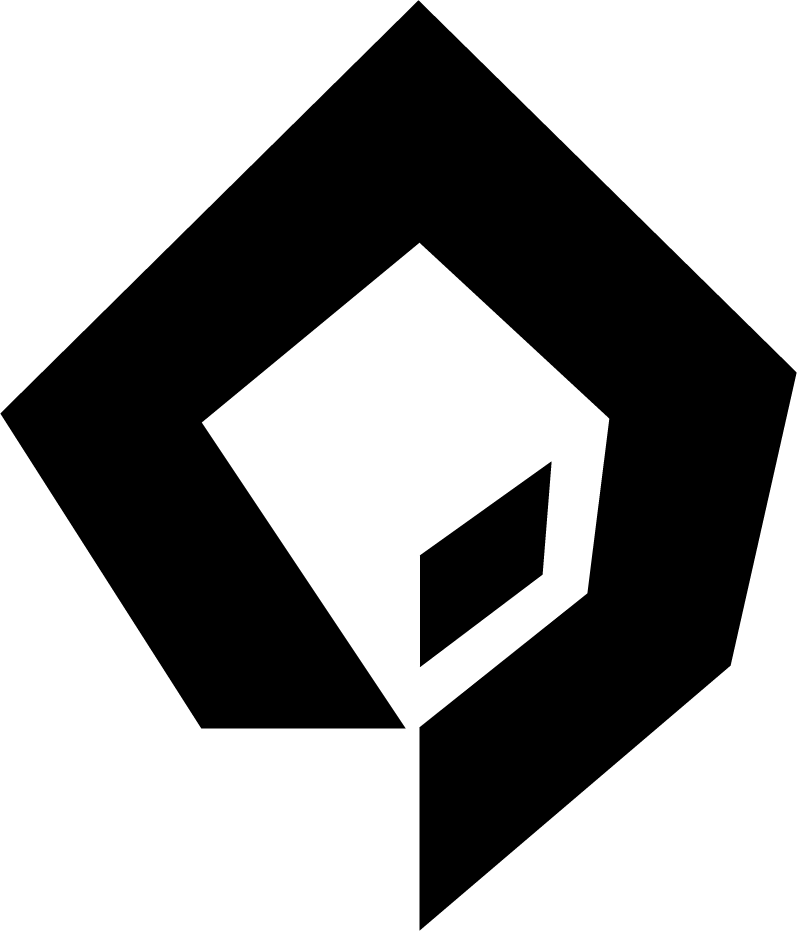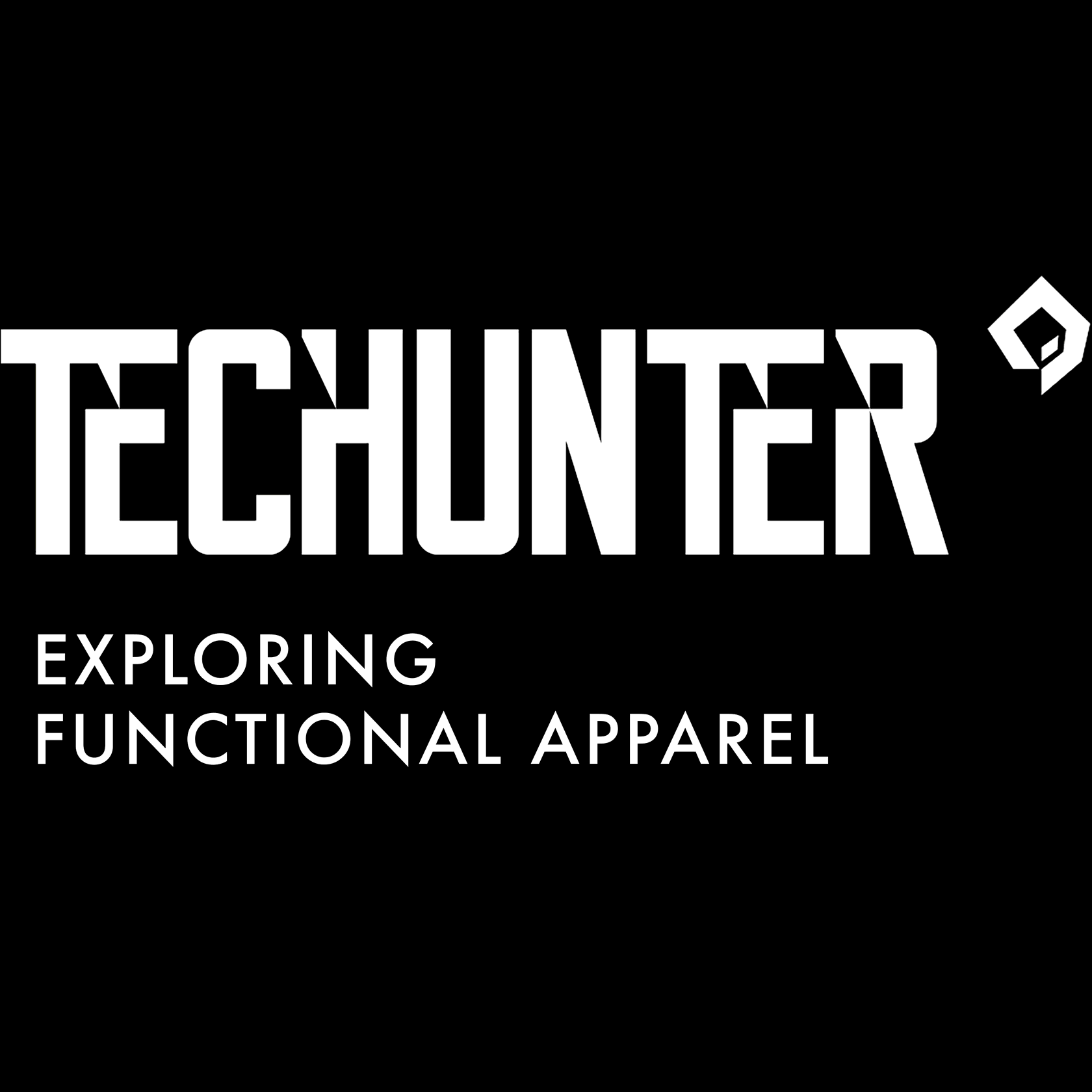Gleb Kirenkov [Interview with the
first Russian techwear designer]
first Russian techwear designer]

Gleb Kirenkov [Interview with the
first Russian techwear designer]
first Russian techwear designer]
"Russian techwear" – the notion of more mystical, than real, if you will invest truly original principles. 4 years ago and now there is almost no original and cool projects on the Russian market that deserve attention and refer with all the dedication to their work. From the very beginning of the TECHUNTER foundation our project tried to convey high-quality information and offer a noteworthy product. And if you have heard about NAMELESS, then, for sure, we have passed this thorny path of creating tech clothing in Russia together.
In this interview, chief designer and founder of the brand Gleb Kirenkov will share his story, thoughts and conclusions about this path and the whole subculture of "techwear", as well as talk about his new projects.
Interview: Alexander Zabelin.
Answers: Gleb Kirenkov.
Photos: Ivan Dzhatiev, TECHUNTER/NAMELESS archives.
Interview: Alexander Zabelin.
Answers: Gleb Kirenkov.
Photos: Ivan Dzhatiev, TECHUNTER/NAMELESS archives.

[Tell us the story of the TECHUNTER foundation.]
Initially I wanted to make clothes, then I was very interested in SI SP and ACRNM. To start, it was decided to create an audience to sell the product. Since I was actively looking for shops, factories and materials, the name TECHUNTER suited – hunting for technologies. The social media page grew up and the activity showed our relevance. At the end of 2015 our graphic designer designed a fan booklet, I decided to print it and distribute. So the idea was born to delegate general information online and exclusive in print. Which was well received by the audience.
Initially I wanted to make clothes, then I was very interested in SI SP and ACRNM. To start, it was decided to create an audience to sell the product. Since I was actively looking for shops, factories and materials, the name TECHUNTER suited – hunting for technologies. The social media page grew up and the activity showed our relevance. At the end of 2015 our graphic designer designed a fan booklet, I decided to print it and distribute. So the idea was born to delegate general information online and exclusive in print. Which was well received by the audience.
[Why did you leave TECHUNTER?]
The forced ending of Nameless in 2017 has led to a reassessment of values in my personal brand DNA. Plus, I have not been engaged in journalism for a long time, and in the magazine I saw exactly the goods, printed products, and not the information link between the audience. The share of hype around tech clothing has led to the growth of marginal brands, in my opinion, ugly, copied and glued from everything seen on the Internet. It was important for me to have a new clean space, and to be in an information environment, where, definitely, not my style was prevailing, was difficult and I stopped contributing to the project. By the time the organic way has already formed a team that understands its mission and builds clear goals.
The forced ending of Nameless in 2017 has led to a reassessment of values in my personal brand DNA. Plus, I have not been engaged in journalism for a long time, and in the magazine I saw exactly the goods, printed products, and not the information link between the audience. The share of hype around tech clothing has led to the growth of marginal brands, in my opinion, ugly, copied and glued from everything seen on the Internet. It was important for me to have a new clean space, and to be in an information environment, where, definitely, not my style was prevailing, was difficult and I stopped contributing to the project. By the time the organic way has already formed a team that understands its mission and builds clear goals.
Sometimes it is important to realize your contribution, its quality and limited quantity – I acted honestly.

[How did you come up with the idea of creating clothes? What was your main goal at the time of creating your own brand?]
I have been engaged in illustration and design of prints for t-shirts for a long time. Also engaged in silk-screen printing, carried out supervision and tried to experiment with printing. The first steps in the field of fashion design were like everyone else – I drew prints in my own style, in my concept and then I printed t-shirts. It quickly bored me and I wanted to raise the bar. Thus began work on the first anorak jacket for NAMELESS.
The main goal in creating my own brand for me personally is always the desire to leave a positive mark in the life of every person who purchased my products. So, for a long time developing technological clothes, it was important to maintain comfort and security in the design. Comments and posts like those that made editors of PROPERMAG: Mark and Neil, that "the English Rain vs NAMELESS – 0:1 for the NAMELESS" – the most valuable thing might be more valuable than the extra cost and lost profits. Because these are pure emotions – it is for their reception to a greater extent that the buyer gives money.
I have been engaged in illustration and design of prints for t-shirts for a long time. Also engaged in silk-screen printing, carried out supervision and tried to experiment with printing. The first steps in the field of fashion design were like everyone else – I drew prints in my own style, in my concept and then I printed t-shirts. It quickly bored me and I wanted to raise the bar. Thus began work on the first anorak jacket for NAMELESS.
The main goal in creating my own brand for me personally is always the desire to leave a positive mark in the life of every person who purchased my products. So, for a long time developing technological clothes, it was important to maintain comfort and security in the design. Comments and posts like those that made editors of PROPERMAG: Mark and Neil, that "the English Rain vs NAMELESS – 0:1 for the NAMELESS" – the most valuable thing might be more valuable than the extra cost and lost profits. Because these are pure emotions – it is for their reception to a greater extent that the buyer gives money.
[How did the NAMELESS start? Tell us about the formation of the brand in the early stages and the team work.]
NAMELESS began with TECHUNTER magazine. Then it was assumed that the brand will be named Techunter, but one person persuaded me, arguing that it is like "oiled oil" - when the magazine writing about tech also makes tech and sells tech. At the moment, I would not agree with him and would be happy to buy accessories and products of TECHUNTER magazine, in addition to a print run.
At first, the brand worked as a Studio – stable orders came once a week, mainly from abroad. The reason for this demand was the English-language policy of social networks and a successful sale to the collector and DIY-er from the United States, which made a review of our jacket and sent us a separate offer.
Soon, in the beginning of 2016 we came to the team of BNWT store – a new project from the Moscow community, which included guys from other former retail projects and brands, for example Adidas. So, literally on the base of having done one jacket, we immediately began cooperation with a new store in the center of Moscow.
NAMELESS began with TECHUNTER magazine. Then it was assumed that the brand will be named Techunter, but one person persuaded me, arguing that it is like "oiled oil" - when the magazine writing about tech also makes tech and sells tech. At the moment, I would not agree with him and would be happy to buy accessories and products of TECHUNTER magazine, in addition to a print run.
At first, the brand worked as a Studio – stable orders came once a week, mainly from abroad. The reason for this demand was the English-language policy of social networks and a successful sale to the collector and DIY-er from the United States, which made a review of our jacket and sent us a separate offer.
Soon, in the beginning of 2016 we came to the team of BNWT store – a new project from the Moscow community, which included guys from other former retail projects and brands, for example Adidas. So, literally on the base of having done one jacket, we immediately began cooperation with a new store in the center of Moscow.
[How was the first collection created? What was the demand and attention to the first Russian techwear brand?]
The first collection was created very quickly, because the deadlines were burning. But the designs were ready and the fabrics were reserved for us in the right small amount for the first step of development. I spent almost every day in the shop, with the whole team we met on weekends, sitting in a cafe and discussing visual content, social networks, etc.
The attention was ambiguous, which is the norm for the Russian mentality. There were skeptics, there were those who said with a grin "like a Russian ACRNM", there were those who tried to prove that we are exploiting unprofessional Korean or Vietnamese seamstresses. There were also haters who after the first presentation became buyers, regular customers and good friends. We managed to convince a decent number of people to the fact that in Russia you can do anything at the foreign level-from this increased attention: despite the closure of our history, people still remember about it and ask.
[Tell us about the first experience of wholesale purchases. Why is BNWT? What conclusion can you draw from this example of working with Russian retail store?]
The first collection was created very quickly, because the deadlines were burning. But the designs were ready and the fabrics were reserved for us in the right small amount for the first step of development. I spent almost every day in the shop, with the whole team we met on weekends, sitting in a cafe and discussing visual content, social networks, etc.
The attention was ambiguous, which is the norm for the Russian mentality. There were skeptics, there were those who said with a grin "like a Russian ACRNM", there were those who tried to prove that we are exploiting unprofessional Korean or Vietnamese seamstresses. There were also haters who after the first presentation became buyers, regular customers and good friends. We managed to convince a decent number of people to the fact that in Russia you can do anything at the foreign level-from this increased attention: despite the closure of our history, people still remember about it and ask.
[Tell us about the first experience of wholesale purchases. Why is BNWT? What conclusion can you draw from this example of working with Russian retail store?]
This is certainly a great experience for a young novice brand, when you do not take on the implementation, and immediately redeem the entire collection. Why is BNWT? It was the first store to cling to us, to see a potential in us and to be passionate about our process. But, unfortunately, I can not make positive conclusions. First, the discount with which everything was redeemed, covered the costs with a small margin, and we just shot their direct sales abroad. So I came and bought my own product and sent it abroad – for some reason, the offer to the buyer to go to the BNWT store online always ended in failure and the customer was returned to us. Of course, the blame for the small experience, as mine, my team and the team BNWT.
We presented the first collection successfully, there were sales as the audience who came to a party went with the purpose to look at us. The second presentation, unfortunately, selected the wrong release time (a couple of days before we had the birthday of a GJO.E brand) taking into account the products shipping. Well, the event itself gathered an audience that came for music and free drinks – I can say this with full responsibility, as compared to the first presentation, I communicated less with the audience attacking me. But, in any case, I am grateful to the BNWT team for sharing this difficult path together.
We presented the first collection successfully, there were sales as the audience who came to a party went with the purpose to look at us. The second presentation, unfortunately, selected the wrong release time (a couple of days before we had the birthday of a GJO.E brand) taking into account the products shipping. Well, the event itself gathered an audience that came for music and free drinks – I can say this with full responsibility, as compared to the first presentation, I communicated less with the audience attacking me. But, in any case, I am grateful to the BNWT team for sharing this difficult path together.
[How was the goal to go to Berlin born? What did you understand after the trip and what were the prospects for the development of the brand immediately after the exhibition?]
We actively communicated with foreign audiences and influencers. One of these people was the editor of the Outdoor Aesthetics blog, who said that he would be curating at the BRIGHT tradeshow in Berlin a separate direction related to technology and outdoor-brands, and would like to see us there. Without hesitation, we discussed all the nuances of participation and engaged in the preparation, visas and tailoring of new models.
In winter of 2017 in tour, the first thing I saw there was a difference of mentality: European and Russian. Berlin met us very good-naturedly. We were not just the brand from Russia, but we came with products from European materials that people recognized: they were surprised by the presence of our No Wind fleece from Pontetorto, RiRi zippers and accessories by Cobrax. There were cases when representatives of other brands, after finishing their interviews with the media, took all the journalists and came to our stand, told about our brand with an admiring look.
We actively communicated with foreign audiences and influencers. One of these people was the editor of the Outdoor Aesthetics blog, who said that he would be curating at the BRIGHT tradeshow in Berlin a separate direction related to technology and outdoor-brands, and would like to see us there. Without hesitation, we discussed all the nuances of participation and engaged in the preparation, visas and tailoring of new models.
In winter of 2017 in tour, the first thing I saw there was a difference of mentality: European and Russian. Berlin met us very good-naturedly. We were not just the brand from Russia, but we came with products from European materials that people recognized: they were surprised by the presence of our No Wind fleece from Pontetorto, RiRi zippers and accessories by Cobrax. There were cases when representatives of other brands, after finishing their interviews with the media, took all the journalists and came to our stand, told about our brand with an admiring look.
The most important thing that we learned from the trip to Berlin – is to get acquainted with the Firmament store, the legendary location, standing at the origins of the entire streetwear industry in Europe. We broke into their private party and invited them to our stand. In fact, we went all in, fearing that our daring act will spoil the impression. In fact, our activity was a plus for us – the founders and buyers of the store came to our stand, where we personally told about all our nuances and focus on the details. The response of the store was positive – they appreciated the uniqueness of the fabrics: that we use the materials is not worse than Gore-Tex, but not so popular and it gives us value. And also appreciated the design itself.
The prospects were thick – a thick stack of business cards and contacts. Stores from Europe, magazines, invitations to London, as well as Japanese retailers. All this required careful processing, strategy building and general enhanced teamwork.
The prospects were thick – a thick stack of business cards and contacts. Stores from Europe, magazines, invitations to London, as well as Japanese retailers. All this required careful processing, strategy building and general enhanced teamwork.

NAMELESS at
BRIGHT in Berlin, January 2017.
BRIGHT in Berlin, January 2017.
[When did the first difficulties begin and did you understand their root cause, looking back now?]
Alas, it was after Berlin: perhaps we expected that after the trip we will hit the cash flow, or worldwide fame. But in fact, a great responsibility was placed on us: it was necessary to spend more time to develop, organize brainstorms, but, unfortunately, the main part of the team had other things of a personal nature, which I have not found a positive leverage to keep everyone in line and the same vein. As a result, one by one people came to the meeting less, work became less, there were negative questions and our communication began to move into a frank confrontation.
I can't blame everyone else, I started this story and gathered those people around me, inspiring them with my ideas. Therefore, the main share of the blame is on me – I failed to maintain team spirit, could not reveal to people the plan for the long-term prospects of the NAMELESS brand, and somewhere probably moved to personal level in the conversation. Therefore, the root cause I would call inexperience as CEO of the project. And from this cause comes a string of other people's mistakes, which I gave the course, as in dominoes.
Alas, it was after Berlin: perhaps we expected that after the trip we will hit the cash flow, or worldwide fame. But in fact, a great responsibility was placed on us: it was necessary to spend more time to develop, organize brainstorms, but, unfortunately, the main part of the team had other things of a personal nature, which I have not found a positive leverage to keep everyone in line and the same vein. As a result, one by one people came to the meeting less, work became less, there were negative questions and our communication began to move into a frank confrontation.
I can't blame everyone else, I started this story and gathered those people around me, inspiring them with my ideas. Therefore, the main share of the blame is on me – I failed to maintain team spirit, could not reveal to people the plan for the long-term prospects of the NAMELESS brand, and somewhere probably moved to personal level in the conversation. Therefore, the root cause I would call inexperience as CEO of the project. And from this cause comes a string of other people's mistakes, which I gave the course, as in dominoes.
[Why the latest model (D_NGO raincoat) got so expensive? How did the audience react to the transition to a higher market segment?]
Banal mathematics: a meter of fabric costs 21.5 euros, one button costs 150 (2 euros) rubles, a complex design of patterns – a large number of cuts, which takes a lot of tape for sealing and, consequently, hours of work in the sealing shop. Then a wrong policy from the brand manager that we had. According to him, we should have immediately sold to stores after Berlin and the bar should have been raised. It was necessary to study the policy of pre-orders. To produce the coat to your clean direct retail. Despite this (the price was almost higher than Stone Island coats that released in the same time with D_nG0) interest in them has been upgraded. Some went to a boutique in Canada, some was bought after an interview with Adrian Bianco, some Moscow customers bought raincoats – and it was not just fashionistas, but people from the high business sphere who paid attention to us. We can say that if it were not for a mistake in the poorly developed strategy of the company, it would be even better to implement everything.
Banal mathematics: a meter of fabric costs 21.5 euros, one button costs 150 (2 euros) rubles, a complex design of patterns – a large number of cuts, which takes a lot of tape for sealing and, consequently, hours of work in the sealing shop. Then a wrong policy from the brand manager that we had. According to him, we should have immediately sold to stores after Berlin and the bar should have been raised. It was necessary to study the policy of pre-orders. To produce the coat to your clean direct retail. Despite this (the price was almost higher than Stone Island coats that released in the same time with D_nG0) interest in them has been upgraded. Some went to a boutique in Canada, some was bought after an interview with Adrian Bianco, some Moscow customers bought raincoats – and it was not just fashionistas, but people from the high business sphere who paid attention to us. We can say that if it were not for a mistake in the poorly developed strategy of the company, it would be even better to implement everything.
[When did you realize that everything was going down the drain and what contributed to it?]
It's hard to answer this question without getting personal. Therefore, I will answer simply and briefly: when the questions in the chat are answered longer than usual, when you wait for the result, and you get a hack, when you want to discuss the problem and find solutions, and you get accusations. It's all like a snowball, the weight of which is felt more and more. As a result, there is no other way out but to stop rolling this huge ball of problems uphill, to the top, to victory, and it's easier to let it go and let it roll, and you, relieved from this weight, will go further up.
It's hard to answer this question without getting personal. Therefore, I will answer simply and briefly: when the questions in the chat are answered longer than usual, when you wait for the result, and you get a hack, when you want to discuss the problem and find solutions, and you get accusations. It's all like a snowball, the weight of which is felt more and more. As a result, there is no other way out but to stop rolling this huge ball of problems uphill, to the top, to victory, and it's easier to let it go and let it roll, and you, relieved from this weight, will go further up.
[How did you decide to close the brand? Your feelings about it.]
It hurt. In primarily on themselves. The decision was made quite simply – six months of silence, not because we were preparing something cool, but because we all just did nothing. I closed the financial obligations to investors, others went on their personal business. I understood that sooner or later you need to return to the design of clothing and, therefore, worries about the lost faded into the background. I lost basically nothing – there were leftovers of the fabric, contacts, good memories (people are still writing that they are delighted with the items purchased and waiting for new) and experience, which is the most valuable.
It hurt. In primarily on themselves. The decision was made quite simply – six months of silence, not because we were preparing something cool, but because we all just did nothing. I closed the financial obligations to investors, others went on their personal business. I understood that sooner or later you need to return to the design of clothing and, therefore, worries about the lost faded into the background. I lost basically nothing – there were leftovers of the fabric, contacts, good memories (people are still writing that they are delighted with the items purchased and waiting for new) and experience, which is the most valuable.
[Please, describe the main problems of the clothing industry as a whole on the part of the designer and entrepreneur in Russia with the experience of creating the first original and high-quality brand of technological clothing.]
Frankly speaking, there is nothing in Russia. If all that is and someone came to it – it is kept a secret. Because the competition here generates a negative, not market development. Also, of course, we, as a third world country, consume-copy more than create-offer. Also scares the lack of young staff in the working sphere: seamstresses, cutters, etc. All these people are 30, and even 40+ years old. Young people are not interested: low wages and no prospects. Therefore, because of the high age, very few people are interested in doing something unusual – they are so used to doing simple, and the young are not interested in working on the complex for a small salary. It is possible to list problems eternally and, I am afraid, in many respects the solution will be change of mentality of Russians – to appreciate, to do at the level, to be proud of real achievements, and not to waste the ones of the past.
[What are the main tools for brand promotion in your industry based on past experience?]
Frankly speaking, there is nothing in Russia. If all that is and someone came to it – it is kept a secret. Because the competition here generates a negative, not market development. Also, of course, we, as a third world country, consume-copy more than create-offer. Also scares the lack of young staff in the working sphere: seamstresses, cutters, etc. All these people are 30, and even 40+ years old. Young people are not interested: low wages and no prospects. Therefore, because of the high age, very few people are interested in doing something unusual – they are so used to doing simple, and the young are not interested in working on the complex for a small salary. It is possible to list problems eternally and, I am afraid, in many respects the solution will be change of mentality of Russians – to appreciate, to do at the level, to be proud of real achievements, and not to waste the ones of the past.
[What are the main tools for brand promotion in your industry based on past experience?]
Instagram. By far, the best of the tools that allows you to quickly convey a visual message, contact the buyer, contact the influencer and get feedback.
[What do you think about the "techwear" subculture, modern technological clothing and the desire of major brands to make separate city lines?]
As to subculture, now I am rather negative – many freak- and pseudo tech brands, generating bows in-style of post-apocalypse or military character, that in my opinion in modern world should not be a trend. The desire of major brands to pay attention to the urban clothing line is a good prospect – humanity is developing technocratically and the city is a living ecosystem, in the space of which, indeed, there are not enough tools to interact with it.
[What will happen next with the experience gained with technological materials?]
Experience and materials will go to NO DIPLOMA ARCHiTECTURE, but it will not be a tech brand: these fabrics and their properties will only emphasize the quality, kept in the brand.
[What do you think about the "techwear" subculture, modern technological clothing and the desire of major brands to make separate city lines?]
As to subculture, now I am rather negative – many freak- and pseudo tech brands, generating bows in-style of post-apocalypse or military character, that in my opinion in modern world should not be a trend. The desire of major brands to pay attention to the urban clothing line is a good prospect – humanity is developing technocratically and the city is a living ecosystem, in the space of which, indeed, there are not enough tools to interact with it.
[What will happen next with the experience gained with technological materials?]
Experience and materials will go to NO DIPLOMA ARCHiTECTURE, but it will not be a tech brand: these fabrics and their properties will only emphasize the quality, kept in the brand.







NO DIPLOMA ARCHiTECTURE is an opportunity to fill all levels of your personal space, affecting the overall social space.
[What is NO DIPLOMA ARCHiTECTURE?]
It is a multi-faceted project that adds functionality to your daily life. Each object shows a perfect balance of function, form and comfort in its silhouette. In fact, this is a logical continuation of NAMELESS, in which we talked a lot about the city and the architectural space that surrounds a person. The closest of architectural spaces to a person is clothing, then his room with a desk, a bed, after the apartment itself, the building, the yard, the street, the district and, finally, the city.
It is a multi-faceted project that adds functionality to your daily life. Each object shows a perfect balance of function, form and comfort in its silhouette. In fact, this is a logical continuation of NAMELESS, in which we talked a lot about the city and the architectural space that surrounds a person. The closest of architectural spaces to a person is clothing, then his room with a desk, a bed, after the apartment itself, the building, the yard, the street, the district and, finally, the city.
[What conclusions from past projects will you bring to the creation and promotion of the new one?]
As I wrote earlier – Instagram and influencers. These tools introduced me to Artem Yermilov – founder of OmankO – Russian media about fashion and culture. We have already marked our acquaintance with a joint object – a loft-coffee table, as well as, personally created for them - desk and a chair made of steel.
As I wrote earlier – Instagram and influencers. These tools introduced me to Artem Yermilov – founder of OmankO – Russian media about fashion and culture. We have already marked our acquaintance with a joint object – a loft-coffee table, as well as, personally created for them - desk and a chair made of steel.
[When is the first release?]
The first release took place in April of 2019 for the 100th anniversary of BAUHAUS. It identified two product lines: the loft version of the chair B3 "WASSILY" by architect Marcel Breuer, made of metal profile and cast concrete parts. This object belongs to the line NO DIPLOMA ARCHiTECTURE – it is made to combine objects, simple shapes, interesting and high-quality materials. Under this line there will be home furnishings, furniture, sophisticated accessories and clothing made of quality materials, mainly the top.
The first release took place in April of 2019 for the 100th anniversary of BAUHAUS. It identified two product lines: the loft version of the chair B3 "WASSILY" by architect Marcel Breuer, made of metal profile and cast concrete parts. This object belongs to the line NO DIPLOMA ARCHiTECTURE – it is made to combine objects, simple shapes, interesting and high-quality materials. Under this line there will be home furnishings, furniture, sophisticated accessories and clothing made of quality materials, mainly the top.
To this object and the event we also released a small collection of clothing NDA x BHS100: axonometric t-shirt with a picture of a chair on the back and a training scheme BAUHAUS on the chest, sweatshirt made of heavy cotton with a print on the back which shows the BAUHAUS building in axonometric style and 100 times placed the school's logo. The final element of the drop is white socks with the abbreviation NDA and BAUHAUS face on the back of the ankle. This merch, with an abundance of prints is the beginning of the NDA HOME STUDiO line and will popularize the created objects, aesthetics and content of NO DIPLOMA ARCHiTECTURE through a more affordable product. In fact, NDA HOME STUDiO is an accompanying merch to the main line of NO DIPLOMA ARCHiTECTURE.


[What are the goals for the new project?]
Create a series of interconnected product lines for all consumers, regardless of age, status and financial independence. It is possible to buy something inexpensive, simple and necessary, feel the aesthetics and then go to another level, thereby changing your space.

Learn more about new releases on the official website – no-diploma-architecture.com



